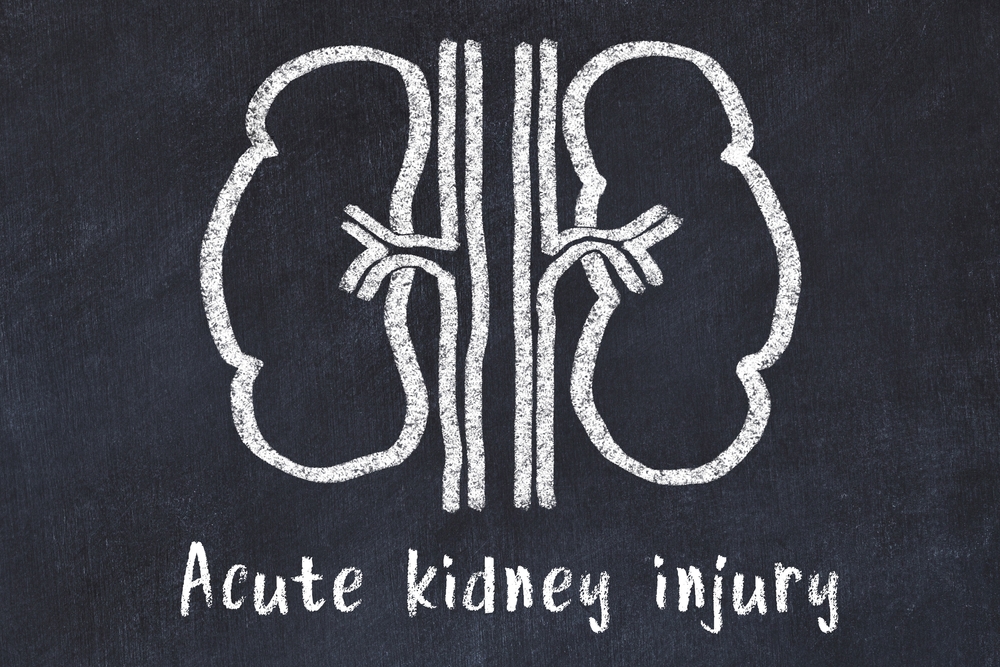
OVERVIEW
Acute tubular necrosis (ATN) is a condition characterised by damage to the tubular cells of the kidney, causing the tubular cells not to function well and to detach from the basement membrane. The kidneys comprise of corpuscular and tubular cells, which help in urine formation. In ATN, the tubular cells become necrotised, causing a pile-up of waste products that the kidneys should have filtered.
Acute tubular necrosis eventually results in acute kidney injury (A.K.I.). It usually occurs when there is a poor supply of blood and oxygen to the kidneys, a term known as hypoperfusion.
Acute tubular necrosis symptoms present when there is severe acute kidney injury. Supportive management is the typical treatment plan. If ATN is not managed well, it will lead to death.
KEY FACTS
- Acute tubular necrosis is a kidney condition where tubular necrosis occurs to the tubular cells, causing them to be dysfunctional and detach from the basement membrane.
- Poor blood and oxygen supply to the kidney (hypoperfusion) is the primary cause of acute tubular necrosis. Anything that causes hypoperfusion will result in tubular necrosis.
- ATN usually resolves on its own in people without underlying disease conditions. In severe cases, treatment interventions are necessary.
CLINICAL PHASES
Acute tubular necrosis causes injury to the tubular cells of the kidney. The kidney’s tubular cell damage occurs in 4 clinical phases.
- Initiation: This is the early phase of tubular damage. There is an acute reduction in the kidney’s glomerular filtration rate- the blood’s concentrations of waste products like blood urea nitrogen and creatinine increase.
- Extension: In extension, the damage to the kidney progresses. Oxygen shortage worsens, and the kidneys get inflamed—the inflammation results from ongoing tubular necrosis and continuous release of cytokines.
- Maintenance: In this phase, the kidney has improved oxygen supply, which repairs the damage due to tubular necrosis. The tubular epithelial cells differentiate and divide into healthy cells.
- Recovery: This is the final phase where the kidney function is restored. The overall morphology of the tubular cells returns to normal.
SYMPTOMS
Acute tubular necrosis symptoms present when the condition becomes severe and the kidney begins to fail. These symptoms include:
- Reduced urine production
- Oedema and swelling
- Fatigue
- Frequent periods of confusion
- Nausea and vomiting
- Always feeling sleepy
DIAGNOSIS
Special tests help the doctor diagnose ATN. These tests include:
- Blood urea nitrogen (BUN): The doctor will order a blood test to assess the blood urea nitrogen levels. Increased blood urea nitrogen levels indicate kidney failure since the kidney typically excretes blood urea nitrogen in healthy individuals.
- Creatinine levels: Creatinine is excreted by the kidney in healthy individuals. In people with ATN, creatinine levels increase.
- Kidney biopsy: The doctor will order a kidney biopsy to confirm the diagnosis and ascertain the extent of kidney damage.
- C.T. scan: A computed tomography (C.T.) scan will show the kidney morphology, allowing the doctor to detect kidney damage.
CAUSES
A reduction in oxygen supply causes acute tubular necrosis (ATN) in the kidneys due to ischemia. Cardiovascular diseases frequently result in ATN. Anything that reduces the blood and oxygen supply to the kidney causes acute tubular necrosis.
The reduction in oxygen and blood supply (hypoperfusion) to kidney tissues damages the cells and makes them not function optimally. ATN is common among people that are critically ill and hospitalised.
Direct injury to the tubular cells can also result in acute tubular necrosis. Critical tubular necrosis causes include:
- Hypotension: Low blood pressure will decrease the amount of blood the heart sends to the kidneys. The reduction in blood supply will damage the tubular cells causing ATN. Cardiovascular diseases like stroke will cause hypotension and, subsequently, acute tubular necrosis.
- Certain drugs: Some drugs are toxic to the kidneys and can cause acute tubular necrosis. Antibiotics (gentamicin, vancomycin, colistimethane), antifungals (amphotericin B) and non-steroidal anti-inflammatory drugs, NSAIDs (diclofenac), are nephrotoxic and can cause acute tubular necrosis. Anaesthetic drugs also lead to acute tubular necrosis.
- Sepsis: ATN that results from sepsis is sepsis-induced acute tubular necrosis. Sepsis causes damage to the kidneys through the release of inflammatory mediators (cytokines). These mediators increase the number of reactive oxygen species (free radicals), leading to renal damage. Also, there is low blood circulation in sepsis which could result in hypoperfusion of the kidneys.
- Dyes: Dyes used for radiological findings harm the kidneys and can cause acute tubular necrosis.
- Chemicals: Substances like lead, ethylene glycol, and mercury leave deposits on the kidney, causing tubular necrosis.
RISK FACTORS
Certain factors put an individual at risk of getting acute tubular necrosis. They are:
- Trauma: Trauma to the kidneys can put one at risk of acute tubular necrosis. When
- Blood transfusion: Blood transfusion reactions can produce antibodies that fight the kidneys and other organs.
- Surgery: Major surgeries cause a blood shortage, decreasing blood supply to the kidneys.
PREVENTION
Preventive measures for acute tubular necrosis include:
- Regulation of blood pressure prevents blood pressure from falling to levels of hypotension.
- Management of other conditions like diabetes and heart disease puts people at risk of ATN.
- Avoiding drugs that are as harmful to the kidneys as possible. If there is a need to take such pills, the patient must be monitored appropriately.
TYPICAL TREATMENTS
The treatment method for acute tubular necrosis will depend on the cause and extent of the condition. The doctor decides the best treatment regimen based on his findings.
Acute tubular necrosis treatment includes the following:
- Treatment of existing diseases: Treat diseases like diabetes, cardiac attack, and other kidney diseases that cause ATN to relieve ATN symptoms.
- Dietary modifications: Another way of managing ATN is by reducing the intake of fluids and foods high in sodium to reduce fluid accumulation.
- Dialysis: In severe cases of tubular necrosis, the individual will need dialysis to help the kidneys filter waste out of the body.
- Use of diuretics: Diuretics are used in some cases of ATN to increase fluid excretion. The use of diuretics is contraindicated in the presence of underlying kidney disease.
CONCLUSION
Acute tubular necrosis is tubular necrosis causing tubular dysfunction and morphological changes in the renal tubule cells. ATN leads to acute kidney injury (A.K.I.) and possible kidney failure.
ATN, with proper management and treatment, can be cured. If the tubular necrosis progresses without appropriate treatment, death will occur.
MOST COMMON






